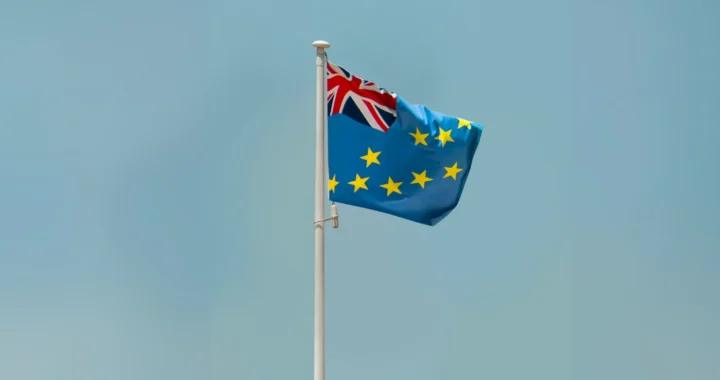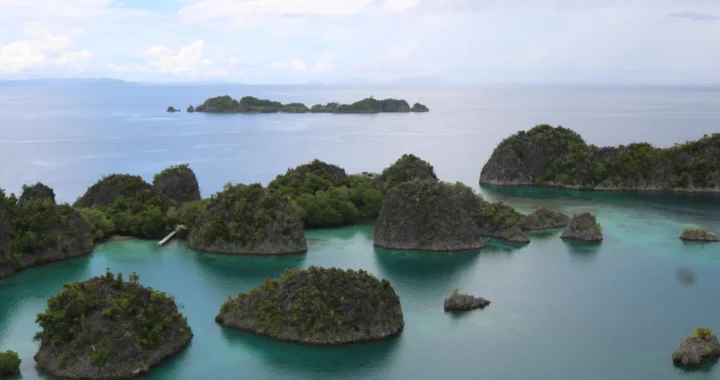Developing Countries Need More Than Climate Financing to Decarbonize

Illustration by Irhan Prabasukma.
The Global North promised to deliver $100 billion USD to help poorer countries fight climate change, but they’re dragging their feet. Worse yet, not only that the climate financing is short, but a significant portion comes in the form of market-rate loans rather than concessional loans or grants that would actually mobilize climate action. Take Indonesia’s case: in their proudly announced $20 billion Just Energy Transition Partnership, less than half is concessional loans or grants.
To what extent is climate financing helpful?
Money alone isn’t the magic fix for the climate challenges faced by developing countries. Sure, it helps plenty, but what really makes a difference is pairing the capital with the right expertise and technology—which developing countries generally lack. Specific “know-how” and technical support tailored for each country’s decarbonization agendas that align with the nation’s economic and developmental goals are key. This is how the Global North can ensure their support is genuinely helpful, not just lip service.
Developing countries are in a tough spot: amidst the climate crisis, they still need to grow their economies and tackle poverty along with other big issues. Southeast Asia, for instance, is shooting to quadruple its economy by 2040. But when they’re also expected to hit net-zero emissions, the capital needed for this massive transformation could eat into the funds for other critical areas. For many developing countries, climate goals and decarbonisation targets might feel more like a heavy financial burden than a smart investment into the future.
Case Study: Indonesia
Take Indonesia as an example. To hit their net-zero emissions goal by 2060, they need to carve out between ~$1-2 trillion. This massive sum covers everything from updating power networks to ramping up renewable energy, plus starting policies like electric vehicle subsidies. That breaks down to needing about $45 billion a year. It is no doubt a huge undertaking with a hefty price tag.
Worse, the $45 billion a year in investment can jeopardize the Indonesian government’s fiscal conditions. Assuming only ~25% of the annual investment is allocated to the government while the rest goes to private spending, this scenario would swell Indonesia’s deficit by a staggering ~0.7% and debt-to-GDP by ~5%. With numbers like these, it’s no wonder many developing countries see this kind of spending more as a financial drain than a step forward.
Growth Opportunity Scenario
What if we flip the script and see this “financial drain” as a growth opportunity instead? Many developing countries may see the shift to green energy as a headache, not a chance for growth. That’s mainly because these countries haven’t really tapped into the industrial side of the green revolution. Most of the “value added” economic activities happen overseas. For instance, the solar panels they use are mostly made in places like China.
The real game-changer for developing countries trying to go green is getting that crucial “know-how” transfer. Once they master the technology, they can play on both sides of the field—importing less and exporting more of their own green products out into the world.
What kind of green “know-how” should developing countries need? Considering the tricky balance between growth and sustainability, they need a smart strategy to start with. There are several principles: first, they should aim for an energy transition that boosts economic development—think industrial growth, not just cutting back. Second, this shift shouldn’t wreck their financial stability, including the health of vital state-owned enterprises. And third, they should leverage their unique natural diversity and regional strengths. This approach isn’t just about going green—it’s about growing smart.
Strategy for Going Forward
For example, Indonesia is sitting on a goldmine with its huge reserves of critical minerals like nickel, positioning it perfectly to lead in green tech like electric vehicles (EV) and solar panels. The game plan? Invest across the entire chain: mine minerals, build batteries, and spark innovations. Pair that with capacity development and training for locals and partnerships with top global EV makers to serve both home and abroad, boosting both the economy and air quality.
Meanwhile, ramping up local production of solar panels could slash energy costs and cut import dependency while opening opportunities to export for the world. In addition, there’s also big potential in focusing on new fuels, such as leveraging the abundant palm oil industries into bioenergy. Smart investments in bio-refineries could help Indonesia ditch fossil fuels faster and hit the international markets with a clean energy source.
And why stop there? Harvard Growth Lab has identified that Indonesia can also capture the semiconductor industry, vital as a key building block for a decarbonized and digital economy. Like Malaysia, Indonesia can start with developing the assembly and testing part of the semiconductor value chain, leveraging competitive labour force and strong manufacturing base.
Developing countries have the potential to grow as a decarbonized nation. The focus shifts today. It’s not just about climate financing; it’s about forging deep, knowledge-based partnerships that enable the Global South to capture real, sustainable growth opportunities.
Editor: Nazalea Kusuma
Publish your thought leadership and insights with Green Network Asia, learn more about our Op-ed Article Guidelines.

Subscribe to Green Network Asia
Strengthen your personal and professional development with cross-sectoral insights on sustainability-related issues and sustainable development across the Asia Pacific and beyond.




 How the Manosphere Is Reshaping Young Men’s Identity
How the Manosphere Is Reshaping Young Men’s Identity  How Plant the Emirates Aims to Support Food Self-Sufficiency in the UAE
How Plant the Emirates Aims to Support Food Self-Sufficiency in the UAE  GRI’s Updated Sustainability Standards on Climate Change and Energy
GRI’s Updated Sustainability Standards on Climate Change and Energy  Looking into Biochar as a Bioremediation Agent
Looking into Biochar as a Bioremediation Agent  Australian Climate Visa for Citizens of Tuvalu: Showcasing cross-border partnership in light of the climate crisis
Australian Climate Visa for Citizens of Tuvalu: Showcasing cross-border partnership in light of the climate crisis  Nickel Mining in Raja Ampat and the Widespread Cost of Natural Resource Exploitation
Nickel Mining in Raja Ampat and the Widespread Cost of Natural Resource Exploitation